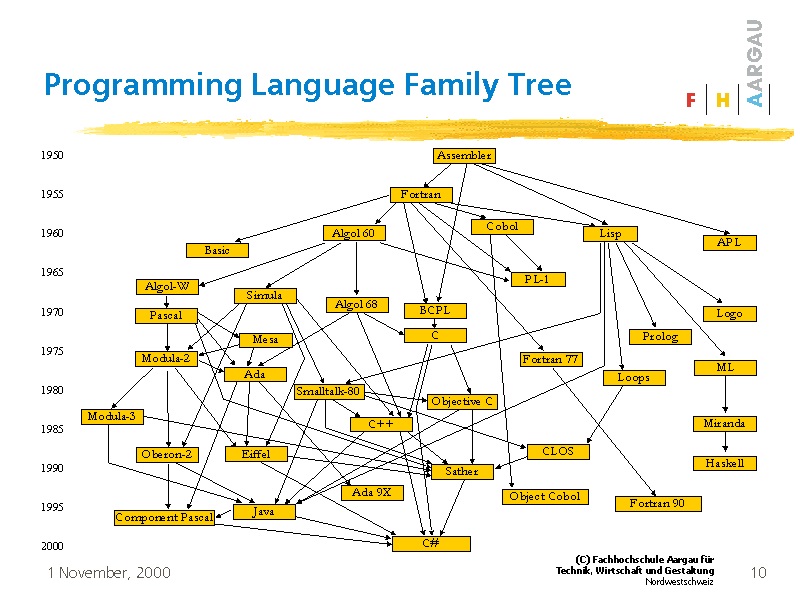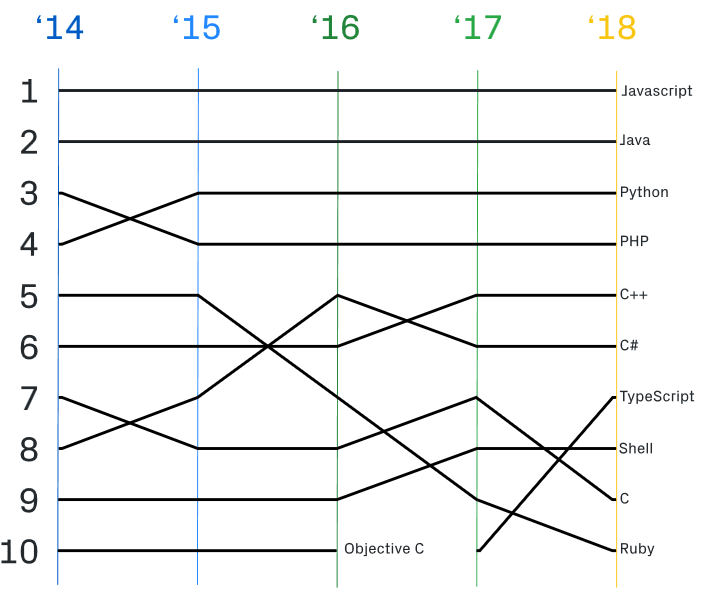The most influential programming language
There are between 5,000 and 25,000 programming languages in the world. But most programmers think it’s just a superior language, and it’s the language they code themselves. In addition, there are three groups that can proudly carry the medal of the most influential programming languages in the world: the parents of languages, the shapers of the world of contemporary programming, and the giants of the world today!

Parents of programming languages
This group is the ones who directed the design of programming languages. Also, created the languages with which the modern programming world is built. Even if these languages are not used directly, their traces can be seen in all new languages.

The image above from the AI Study website provides an overview of the programming language family. Moreover, for an even more detailed diagram, you can see this image from the DigiBarn website!
Assembly
Before experts made the assembly, programming was done directly with zeros and ones. For example, if you wanted to write a command to add something, you had to remember that command 12 means to add. Assembly language makes programming easier by replacing symbolic words with zeros and ones. That is, instead of command 12, you just had to write the word ADD. Assembly was the starting point for the view that programmer time and convenience are far more important than computer time and convenience!
Fortran
Created at IBM in the 1950s, Fortran is one of the first programming languages. Fortran is one of the most widely used languages and even today it still plays an important role in the world of programming. Fortran is the most important language for performing extensive meta-calculations such as weather and climate modeling, computational fluid dynamics, computational chemistry, computational economics, animal husbandry, plant breeding, and computational physics.
Lisp
Lisp has been the source of many innovations in artificial intelligence research, and many of the great programmers of the era have been trained and developed with it. Emacs Editor is made with Lisp.

Simula
It was thanks to Simula that the software world became acquainted with the concept of object-oriented programming. Object, Class, Inheritance, and other object-oriented concepts are all rooted in Simula. Simula is the source of all object-oriented languages such as Smalltalk, CiplusPlus, Cisharp, Java, and JavaScript.
C and C ++ languages
The C language has been so influential that it is not easy to pinpoint its scope. All the operating systems we use (Windows, Unix / Linux, Android, Apple operating system) are all written in C or one of its derived languages. Microsoft Office programs are based on C ++ and C #. Mozilla Firefox is written with CiplusPlus. Thirty also contributed to the emergence of a number of other popular languages.
COBOL
Cobol is the programming language of banks and governments. To find out how much of the world’s vital software is written with Cobol, go search for the 2000 crisis or the Y2K crisis.
PHP
It was Piachupi and Perl who created the World Wide Web. PHP is easy to learn and use, and finding a host that supports Patch is inexpensive. Many of the sites you already know are written in PHP; Like Facebook, WordPress, Wikipedia as well as a lot of Yahoo, LinkedIn, Flickr, and Tumblr.
The programming giants
The following languages are the giants that have taken full control of today’s programming world.

Java
Much commercial software (such as the US Stock Exchange) is built with Java. Most of Google and the entire Amazon system run on Java. The popular Android operating system is also written in Java. Java is ubiquitous: in bank databases, supercomputers used in research, televisions, and smartphones. Over two decades, billions of dollars have been spent optimizing the Java Virtual Machine (JVM) and its software ecosystem.
JavaScript
JavaScript runs the World Wide Web front. The dynamic, neat features you see on sites like Quora, Gmail, and Facebook are all JavaScript achievements. Many people have misunderstood JavaScript over the years, but this language is both very powerful and very beautiful. JavaScript is gradually being used on the server-side (for example, in the Node.js framework).
Ruby and Python
Most US web startups use these two languages; Because Ruby and Python not only have high flexibility and dynamism, they also benefit from amazing web development frameworks like Rails (for Ruby) and Django (for Python).
